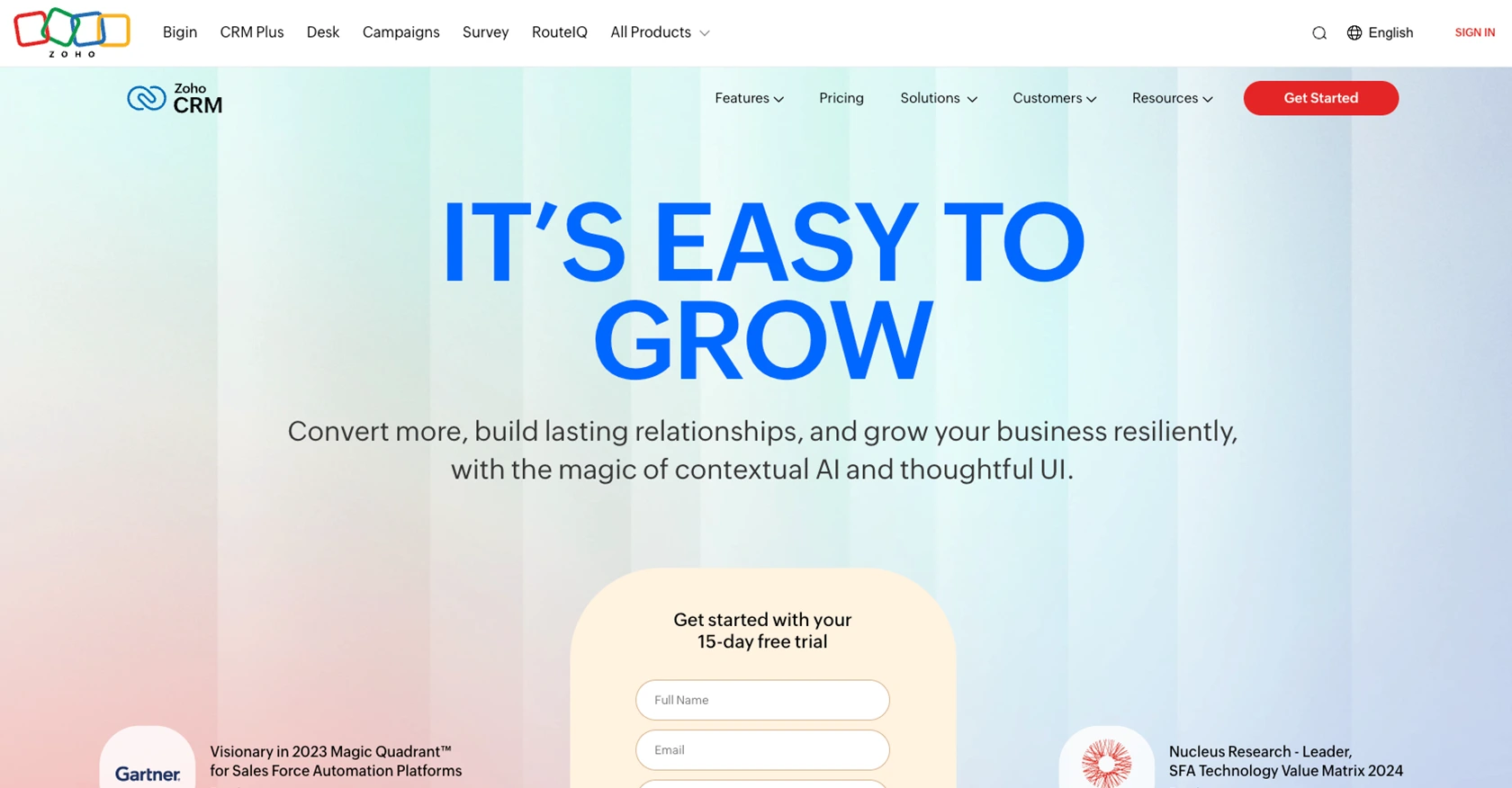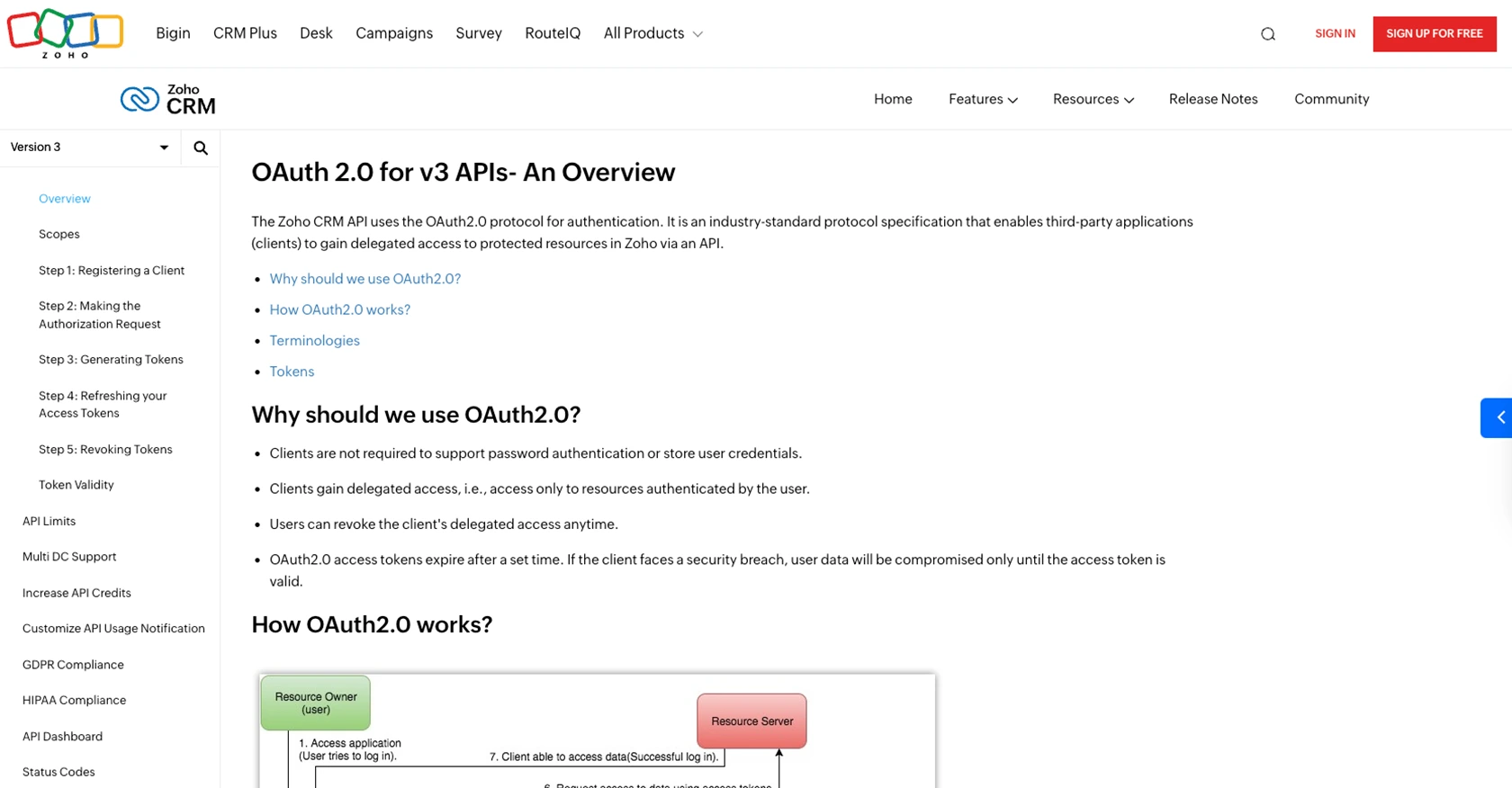Using the Zoho CRM API to Get Contacts in PHP

Introduction to Zoho CRM
Zoho CRM is a comprehensive customer relationship management platform that empowers businesses to manage their sales, marketing, and support in one unified system. Known for its flexibility and scalability, Zoho CRM is a popular choice for organizations looking to enhance their customer engagement and streamline operations.
Developers often integrate with Zoho CRM to access and manage customer data, such as contacts, to improve business processes and customer interactions. For example, a developer might use the Zoho CRM API to retrieve contact information and synchronize it with another application, ensuring that all customer data is up-to-date and consistent across platforms.
Setting Up Your Zoho CRM Test/Sandbox Account for API Integration
Before diving into the Zoho CRM API integration, it's crucial to set up a test or sandbox account. This environment allows developers to experiment with API calls without affecting live data, ensuring a safe and controlled testing space.
Creating a Zoho CRM Developer Account
To begin, you'll need a Zoho CRM developer account. Follow these steps to create one:
- Visit the Zoho Developer Console.
- Sign up for a free account or log in if you already have one.
- Once logged in, navigate to the "Developer APIs" section.
Registering Your Application for OAuth Authentication
Zoho CRM uses OAuth 2.0 for authentication, which requires registering your application to obtain the necessary credentials.
- In the Developer Console, select "Register Client."
- Choose the client type that suits your application (e.g., Web Based, Mobile).
- Fill in the required details:
- Client Name: Name of your application.
- Homepage URL: URL of your application.
- Authorized Redirect URIs: URL where Zoho will redirect after authentication.
- Click "Create" to register your application.
- Note down the Client ID and Client Secret generated for your application.
Generating OAuth Tokens
With your application registered, you can now generate OAuth tokens to authenticate API requests:
- Direct users to the Zoho authorization URL with the appropriate scopes, such as
scope=ZohoCRM.modules.contacts.READ. - Upon user consent, Zoho will redirect to your specified URI with an authorization code.
- Exchange this code for access and refresh tokens by making a POST request to Zoho's token endpoint.
Testing Your Zoho CRM API Integration
With your tokens ready, you can start testing API calls in the sandbox environment:
- Use the access token to authenticate requests to the Zoho CRM API.
- Test various endpoints, such as retrieving contacts, to ensure your integration works as expected.
For more detailed information on OAuth setup, refer to the Zoho CRM OAuth Overview.

sbb-itb-96038d7
How to Make API Calls to Retrieve Contacts from Zoho CRM Using PHP
In this section, we'll guide you through the process of making API calls to Zoho CRM to retrieve contact information using PHP. This involves setting up your PHP environment, installing necessary dependencies, and executing the API request.
Setting Up Your PHP Environment for Zoho CRM API Integration
Before making API calls, ensure your PHP environment is properly configured. You'll need PHP 7.4 or later and the Composer package manager to handle dependencies.
- Install PHP and Composer on your machine if not already installed.
- Create a new directory for your project and navigate to it in your terminal.
- Initialize a new Composer project by running:
composer initInstalling Required PHP Packages for Zoho CRM API
To interact with the Zoho CRM API, you'll need the Guzzle HTTP client. Install it using Composer:
composer require guzzlehttp/guzzleExecuting the Zoho CRM API Call to Retrieve Contacts
With your environment set up, you can now write the PHP script to make the API call. Create a file named get_contacts.php and add the following code:
require 'vendor/autoload.php';
use GuzzleHttp\Client;
$client = new Client();
$accessToken = 'YOUR_ACCESS_TOKEN';
$response = $client->request('GET', 'https://www.zohoapis.com/crm/v3/Contacts', [
'headers' => [
'Authorization' => 'Zoho-oauthtoken ' . $accessToken,
'Content-Type' => 'application/json'
]
]);
$data = json_decode($response->getBody(), true);
foreach ($data['data'] as $contact) {
echo 'Name: ' . $contact['Full_Name'] . ', Email: ' . $contact['Email'] . "\n";
}
Replace YOUR_ACCESS_TOKEN with the access token obtained during the OAuth setup.
Understanding the API Response and Handling Errors
After executing the script, you should see a list of contacts printed to your console. If the request is successful, the response will contain contact details such as name and email.
To handle errors, check the response status code. Zoho CRM API returns specific error codes for various issues. For example, a 400 error indicates a bad request, while a 403 error means permission denied. Refer to the Zoho CRM Status Codes documentation for more details.
Verifying API Call Success in Zoho CRM Sandbox
To confirm the success of your API call, log into your Zoho CRM sandbox account and verify that the contacts retrieved match those in your CRM. This ensures your integration is functioning correctly.
For further information on making API calls, refer to the Zoho CRM Get Records API documentation.

Conclusion and Best Practices for Zoho CRM API Integration Using PHP
Integrating with the Zoho CRM API using PHP allows developers to seamlessly access and manage customer data, enhancing business processes and ensuring data consistency across platforms. By following the steps outlined in this guide, you can efficiently retrieve contacts and integrate them into your applications.
Best Practices for Secure and Efficient Zoho CRM API Integration
- Secure Storage of Credentials: Always store your OAuth tokens securely. Avoid hardcoding them in your scripts. Use environment variables or secure vaults to manage sensitive information.
- Handle API Rate Limits: Zoho CRM imposes API rate limits based on your subscription plan. Monitor your API usage and implement retry logic to handle rate limit errors gracefully. For more details, refer to the Zoho CRM API Limits documentation.
- Error Handling: Implement robust error handling to manage API response errors. Check status codes and handle specific errors like authentication failures or permission issues appropriately.
- Data Transformation: Standardize and transform data fields as needed to ensure compatibility with your application’s data model.
Streamlining Integrations with Endgrate
While integrating with Zoho CRM can be straightforward, managing multiple integrations can become complex. Endgrate simplifies this process by providing a unified API endpoint for various platforms, including Zoho CRM. This allows you to focus on your core product while outsourcing integration complexities.
With Endgrate, you can build once for each use case and leverage an intuitive integration experience for your customers. Explore how Endgrate can save you time and resources by visiting Endgrate.
Read More
- https://endgrate.com/provider/zohocrm
- https://www.zoho.com/crm/developer/docs/api/v3/oauth-overview.html
- https://www.zoho.com/crm/developer/docs/api/v3/scopes.html
- https://www.zoho.com/crm/developer/docs/api/v3/register-client.html
- https://www.zoho.com/crm/developer/docs/api/v3/api-limits.html
- https://www.zoho.com/crm/developer/docs/api/v3/status-codes.html
- https://www.zoho.com/crm/developer/docs/api/v3/field-meta.html
- https://www.zoho.com/crm/developer/docs/api/v3/get-records.html
Ready to get started?
